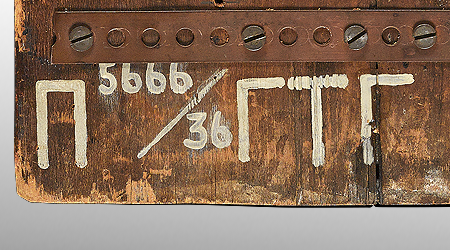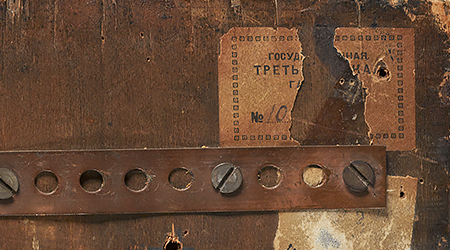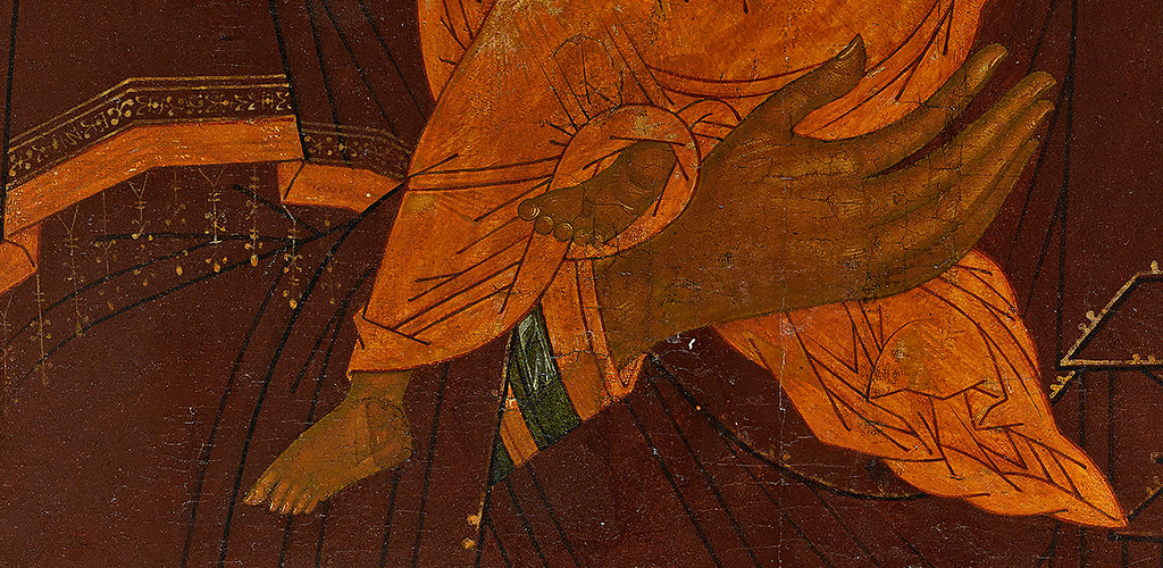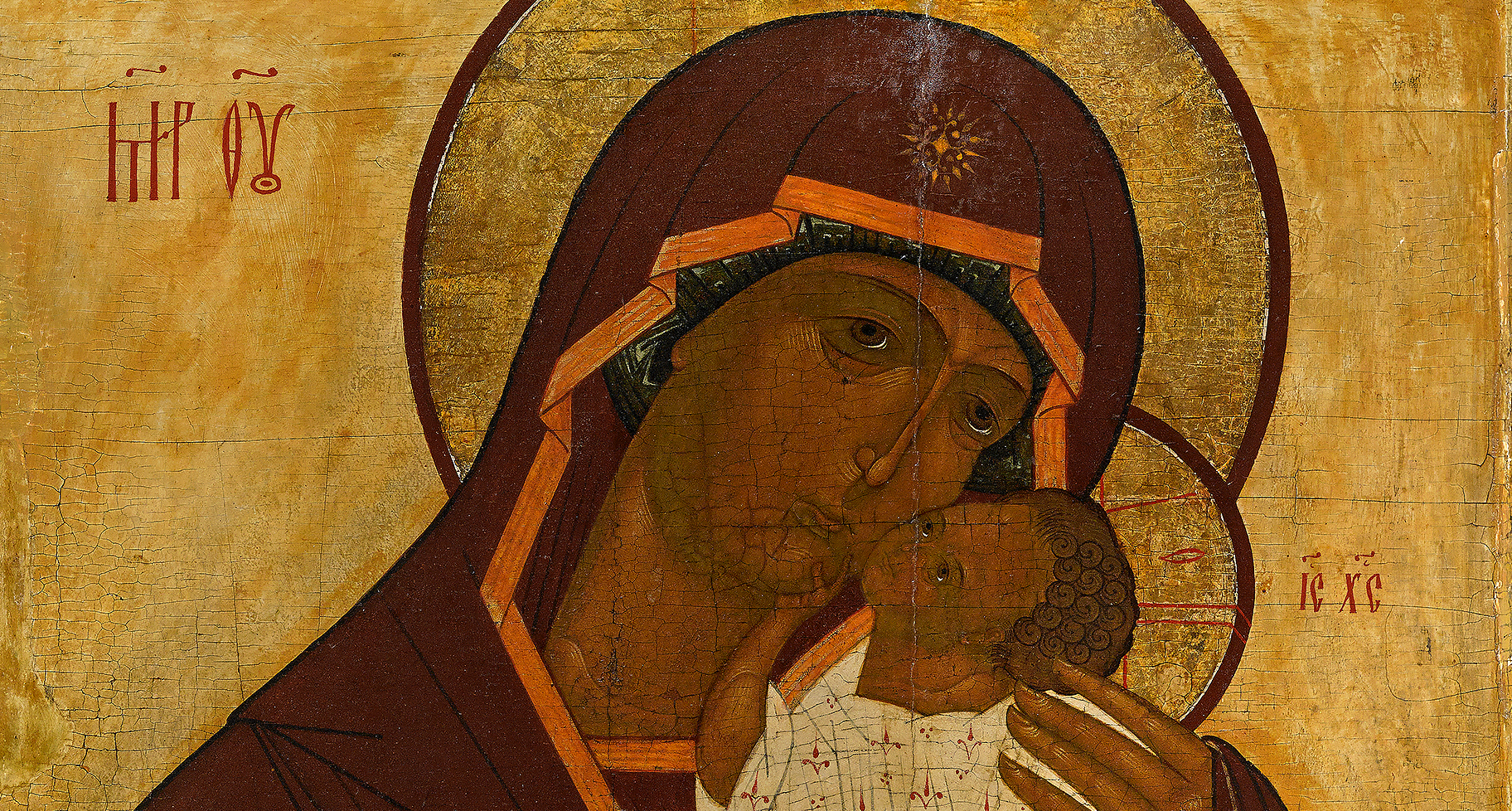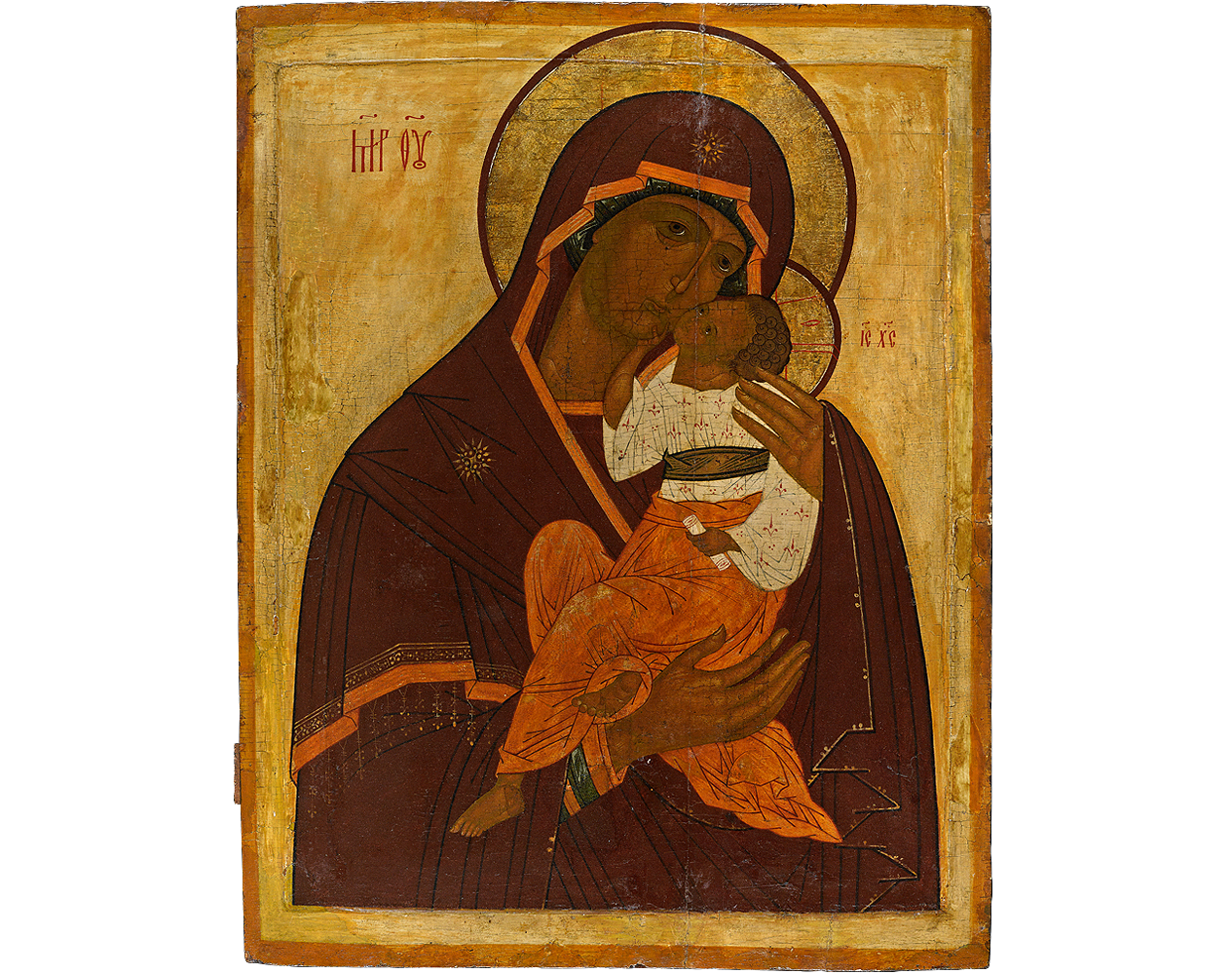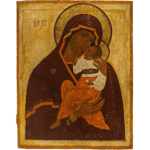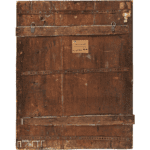Provenance
State Historical Museum, Moscow (II, no. 18)
Tretyakov Gallery, Moscow (label no. 1043; painted inventory no. 14320; Tretyakov Gallery registration no. P 5666/36), 19 August 1930 (transfer order no. 288)
Antikvariat, 25 December 1934 (order no. 232)
George R.Hahn (1875-1954), Pittsburgh, PA, USA (sold through Antikvariat in 1934)
Christie’s New York, The George R. Hann Collection, 17&18 April 1980, lot 66, hammer price $65,000
The Temple Gallery, London
Clarence Woodard, Orinda, CA, USA
Exhibitions
The Century Club, 1940-1941, no. 37
Russian Icons and Objects of Ecclesiastical and Decorative Arts From the Collection of George R. Hann, Carnegie Institute, Pittsburgh, PA, January 12 – February 22, 1944, no. 75
A Loan Exhibition of Russian Icons, Metropolitan Museum of Art, New York, 1944
Russian icons: collection of George R. Hann, Syracuse Museum of Fine Art, Syracuse, NY, 3 December 1944 – 17 January 1945; Columbus Gallery of Fine Art, Columbus, OH, 10 February – 10 March 1945; John Herron Art Institute, Indianapolis, IN, 25 March – 29 April 1945, no. 40
Exhibition of Russian Icons from the Collection of George R. Hann, Allen Memorial Art Museum, Oberlin College, Oberlin, OH, May 1945
Russian Icons and Objects of Ecclesiastical and Decorative Arts, lent by George K. Hahn, St.Louis Art Museum, St.Louis, MO, 15 September – 15 October 1945
Icons and Easter Eggs of Imperial Russia, Hearst Art Gallery, St.Mary’s College, Moraga, CA, 1995
Russian Art of the Nineteenth Century: Icons and Easter Eggs, Haggerty Museum of Art, Milwaukee, WI, 19 April – July 28, 1996
Literature
A. Avinoff, Russian Icons, Collection of George R. Hahn, Pittsburgh, 1944, no. 75
C.G.E. Bunt, A History of Russian Art, The Studio, London & New York, 1946, p. 120, illustrated
M.E.L. Dywer, Hann Collection of Icons // Carnegie Magazine, Volume XLII no.8, October 1968
H.P. Gerhard, The World of Icons, London, 1971, illustrated plates XXXI, pp. 175-176
W. Felicetti-Liebenfels, Geschichte der Russischen Ikonen-Malerei, Druck, 1972, p. 104, illustrated, plate 185
B. Dvorsky, The George Hahn Collection, Christie’s, Manson & Woods International Inc., New York, 1980, no. 66, pp. 142-143, illustrated
R. Temple, Icons, A Search for Inner Meaning, 1982, No.5, illustrated, pp. 59-64 & 114
A. Ruzhnikov, A. Harlow, Icons and Easter Eggs of Imperial Russia [exhibition catalogue], Hearst Art Gallery, Morgana, 1995, no. 1, p. 13
Russian Art of the Nineteenth Century: Icons and Easter Eggs [exhibition catalogue], Haggerty Museum of Art, Milwaukee, 1996, no. 2, pp. 14 & 18
E. Osokina, Nebesnaya golubizna angel’skih odezhd: Sud’ba proizvedeniy drevnerusskoy zhivopisi, 1920–1930-e gody [The Heavenly Blue of Angels’ Vestments: The Fate of Masterpieces of Ancient Russian Religious Art, 1920s-1930s], Moscow, 2018, no. 30, p. 581, p. 28 illustrated in colour
The icon belongs to the iconographic type known as Umilyenie in Russian, and Eleousa (She who shows mercy) or Glykophilousa (She who embraces gently) in Greek. The face of Christ Child is pressed to the cheek of the Virgin. His right hand clutches her chin while in his left he holds an unfurled scroll; his right leg is bent so that his foot can be seen. The figures are painted against a golden background that bears calligraphic inscriptions in Greek: MP ΘΥ (Μήτηρ Θεοῦ, Mother of God) and IC-XC (Ἰησοῦς Χριστός, Jesus Christ)
A very important icon, it comes from the Tretyakov Gallery collection. In 1934, it was transferred to the USSR Central Art Collection Warehouse and then sold by the Soviet government as part of а large collection. The icon was acquired by George R. Hann (1875-1954), a pioneer of air transportation, an avid art collector and philanthropist. For almost 50 years Hann’s collection was housed near Pittsburgh in the ‘Treetops’. The other pieces of this group are now in the collection of the Menil Foundation in Houston, Texas, and in the Timken Museum of Art in San Diego.
The iconography of Eleousa comes from Byzantine art of the post-iconoclastic period. Characterised by an affectionate embrace of Mary and the Christ Child, the image combines the themes of maternal love and the Passion of Christ. One of the most famous icons of this type is the twelfth-century Vladimir icon of the Mother of God from the collection of the State Tretyakov Gallery in Moscow.
